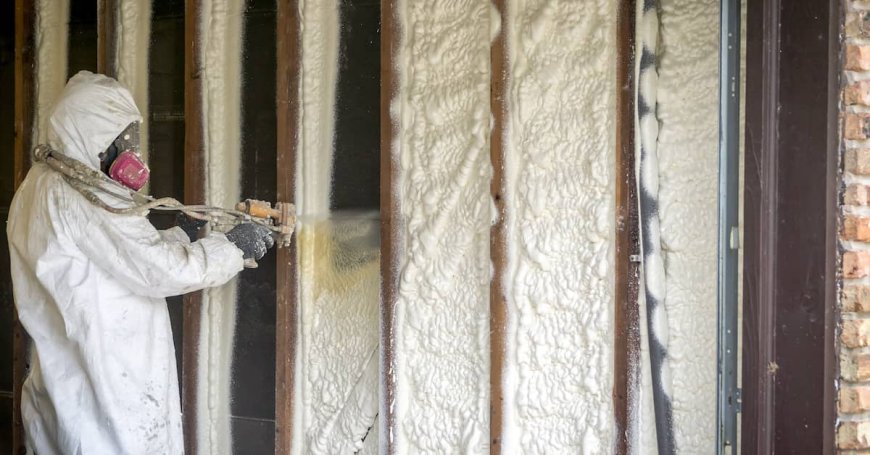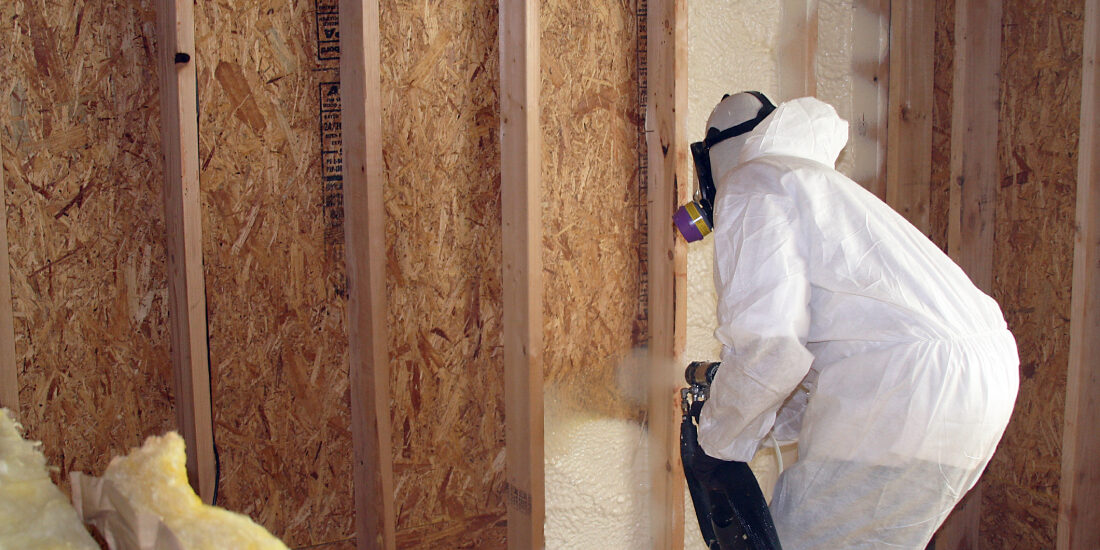How Closed Cell Spray Foam Insulation Performs in Humid Climates

Humidity presents a unique set of challenges for buildingswhether in coastal towns, subtropical cities, or damp inland regions. Moisture can seep into walls, reduce insulation performance, and create long-term structural problems like mold and wood rot. Builders and property owners in these areas often look for insulation solutions that resist moisture while maintaining high thermal performance.
Closed cell spray foam insulation stands out for its density, strength, and ability to form a barrier against air and moisture. This article explores how it performs in humid climates, with a focus on real-world application, performance data, and long-term benefits. Whether you're in construction, building maintenance, or simply looking to improve home efficiency, this guide explains what to expect from this insulation method under humid conditions.
Moisture Resistance Is Built In
Closed cell spray foam is not just resistant to water; it actively helps block its movement. In humid environments, this characteristic makes it more effective than traditional insulation.
How the Closed Cell Structure Affects Moisture Performance
The material consists of compact, gas-filled cells that are fully encapsulated. This gives it a high resistance to both water vapor and liquid water.
-
Low water absorption: Closed cell foam absorbs very little water (typically less than 2%)
-
Acts as a vapor retarder: Helps slow or prevent vapor movement through walls
-
Air sealant qualities: Prevents humid outdoor air from entering the building envelope
These characteristics help maintain consistent interior humidity and temperature, reducing the need for dehumidifiers and extending the lifespan of HVAC systems.
Thermal Efficiency Remains Stable in High Humidity
Thermal performance can degrade when insulation gets wet. In humid climates, the wrong material can lose its R-value over time.
R-Value Retention in Humid Conditions
Closed cell spray foam maintains its R-value of around 6.5 to 7.0 per inch, even in damp conditions. That consistency is due to its dense composition, which resists moisture penetration far better than fiberglass or cellulose.
-
No settling or sagging over time
-
Maintains integrity even when exposed to fluctuating indoor/outdoor humidity
-
Performs in both wall cavities and attic applications
This makes it especially valuable in coastal or tropical areas, where high humidity is the norm rather than the exception.
Air Sealing Performance Reduces Humid Air Infiltration
In warm, moist regions, managing air leakage is just as important as managing insulation R-value. Without air sealing, outdoor humidity can leak in through wall joints, gaps, and roof structures.
How Closed Cell Foam Prevents Humid Air Intrusion
Unlike batt or loose-fill insulation, closed cell foam creates a monolithic barrier. It expands to fill every gap, creating a continuous seal between conditioned and unconditioned spaces.
-
Reduces energy use by limiting HVAC workload
-
Helps maintain indoor comfort year-round
-
Lowers the chance of mold growth due to damp indoor air intrusion
This air sealing quality contributes directly to improved building envelope performancea critical factor in humid-zone energy codes.
Long-Term Durability in Damp Environments
In areas with seasonal or year-round humidity, durability of building materials is crucial. Closed cell spray foam is rated for structural support, making it more resilient under tough conditions.
Resistance to Mold, Mildew, and Material Breakdown
Because closed cell foam does not retain water, it resists biological growth like mold and mildew. This protects both the foam and adjacent materials such as wood framing.
-
Does not serve as a food source for mold
-
Maintains shape and adhesion for decades
-
Often contributes to structural racking strength of walls
Its resistance to moisture-related breakdown helps preserve the integrity of walls, roofs, and subfloorsespecially in older homes or buildings in flood-prone zones.
Comparison Table: Closed Cell Foam vs. Other Insulation in Humid Climates
|
Feature |
Closed Cell Spray Foam |
Fiberglass Batt |
Cellulose |
|---|---|---|---|
|
Water Absorption |
Very Low |
Moderate |
High |
|
Air Sealing |
Excellent |
Poor |
Poor |
|
Mold Resistance |
High |
Low |
Low |
|
R-Value Stability (High Humidity) |
Stable |
Declines |
Declines |
Best Use Cases in Humid Climates
Closed cell foam is not universalit shines in specific locations and applications where humidity poses a performance threat.
Ideal Applications for Closed Cell Spray Foam
Closed cell foam tends to be used strategically in buildings exposed to regular moisture.
-
Crawl spaces and basements: Where ground moisture levels are highest
-
Roof decks and attics: To stop hot, humid air from entering living spaces
-
Exterior walls: Especially in homes near the coast or in flood-prone areas
-
Pole barns and metal buildings: Where condensation can cause rust and rot
By targeting these areas, installers can drastically reduce the risk of humidity-related damage and maintain thermal consistency.
Common Questions
Does closed cell spray foam act as a vapor barrier?
Yes. Closed cell spray foam has a very low permeability rating (often less than 1 perm at 2 inches), making it an effective vapor retarder. This helps prevent moisture movement in humid zones.
Can closed cell foam be used in flood zones or coastal regions?
Its one of the preferred insulation types in flood-prone or coastal areas. Closed cell foam doesnt absorb water and resists mold, making it ideal where occasional flooding or high humidity is expected.
Is there a risk of trapping moisture inside walls?
When installed properly with attention to climate zone requirements, the risk is low. In humid climates, walls should be designed to dry to the interior, and mechanical ventilation should be in place.
How does spray foam affect HVAC sizing in humid regions?
Because closed cell foam significantly reduces air infiltration, HVAC systems often need to be downsized. This improves both energy use and humidity control efficiency.
Conclusion
Humidity complicates insulation decisions, especially when long-term performance and building health are top concerns. Expert spray foam insulation contractors offer a proven solution in these conditions. Its dense structure resists both air and moisture infiltration, while maintaining high thermal efficiency and structural support.
For builders, property managers, and homeowners in humid regions, this insulation type can reduce energy costs, prevent mold, and extend the life of the building envelope. When installed in the right locations and according to climate-specific guidelines, closed cell foam delivers consistent, dependable performance.
FAQs
How thick should closed cell spray foam be in humid areas? In humid climates, 23 inches is typical for vapor control and thermal performance. Roof decks and wall assemblies may require more, depending on code requirements.
Is closed cell foam better than open cell for humidity? Yes. Closed cell foam has lower water absorption and acts as a vapor retarder, making it more suitable for high-moisture areas compared to open cell foam.
Can closed cell foam insulation help reduce indoor humidity? It doesnt dehumidify directly, but it prevents outdoor moisture from entering, which helps HVAC systems manage indoor relative humidity more effectively.
Is this insulation suitable for metal buildings in humid zones? Closed cell spray foam is often used in metal structures, as it prevents condensation and rust, which are common in humid environments.
Does closed cell foam degrade over time in moist conditions? No. Closed cell foam maintains its structure and R-value stability, even in areas with consistent humidity or incidental water exposure.
Reviewer
With nearly a decade in the spray foam insulation field, William Harris reviewed this post and provided guidance that reflects both technical understanding and real-world marketing experience.








































